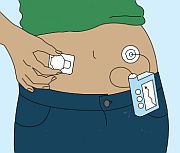Regulators should require more from manufacturing companies; more data needed on long-term use
WEDNESDAY, March 18, 2015 (HealthDay News) — Modern insulin pump technologies could be further improved by adopting a more rigorous, standardized, and transparent approach to safety, according to a joint scientific statement from the European Association for the Study of Diabetes and the American Diabetes Association. The statement was published online March 16 in Diabetes Care.
Lutz Heinemann, Ph.D., from Science & Co. in Düsseldorf, Germany, and colleagues reviewed the systems in place for evaluating the safety of pumps from a clinical perspective.
The researchers found that information held by manufacturing companies was not shared in a sufficiently transparent manner. Due to a current configuration of the system, adverse event reports held on the U.S. Food and Drug Administration’s Manufacturer and User Facility Device Experience database are insufficiently utilized; the comparable European database is not publicly accessible. Although many adverse events appear attributable to human factors, regulators require manufacturing companies to consider interactions of users with the technical features of their products to a limited extent. Regulatory requirements for clinical studies prior to marketing are small and over-reliant on bench testing. Insufficient data are made publicly available on long-term use once a pump is available on the market; such data could provide vital information for health care teams to support users.
“As well as requiring more from the manufacturing companies, we call for public funding of more research addressing clinically important questions in relation to pump therapy: both observational studies and clinical trials,” the authors write.
Several authors disclosed financial ties to the pharmaceutical and medical device industries.
Copyright © 2015 HealthDay. All rights reserved.








